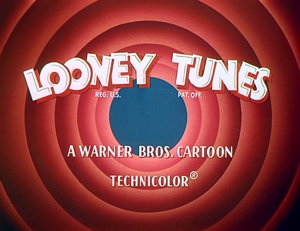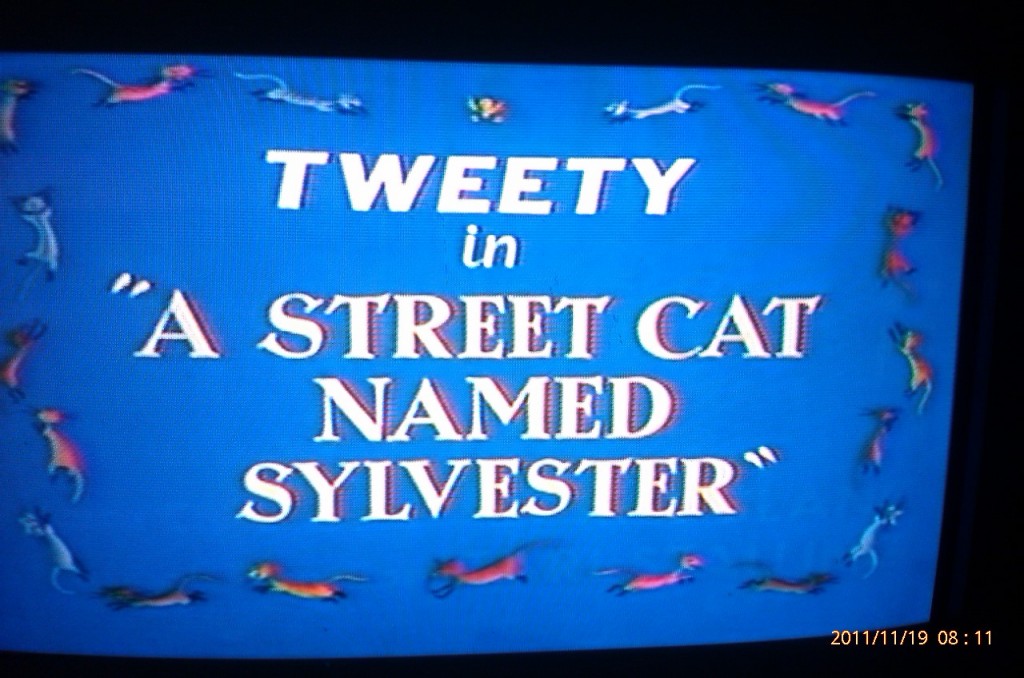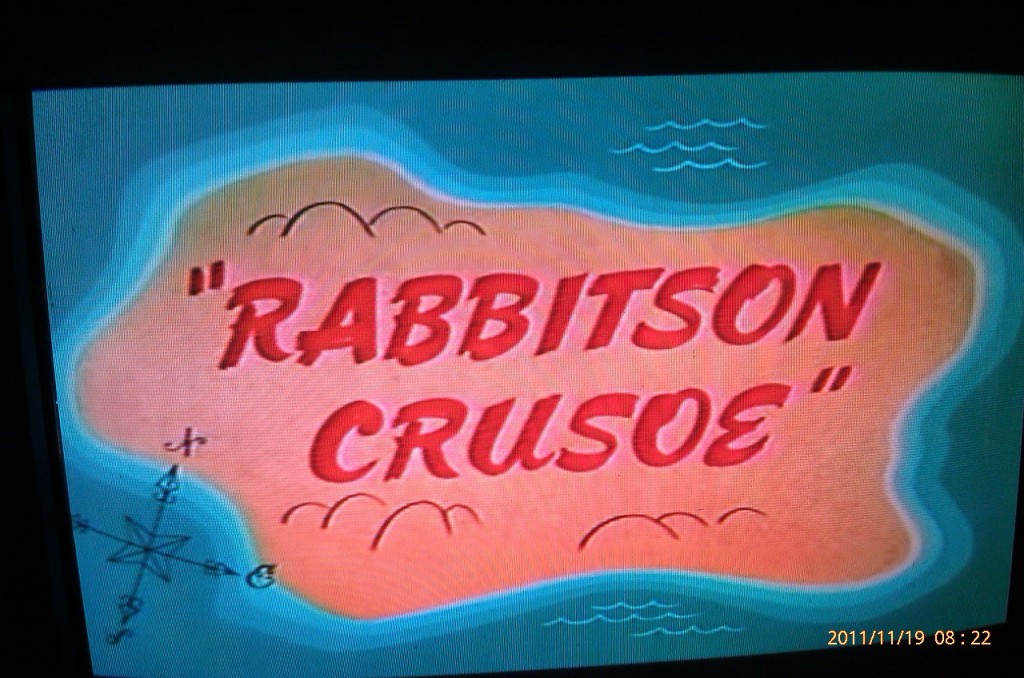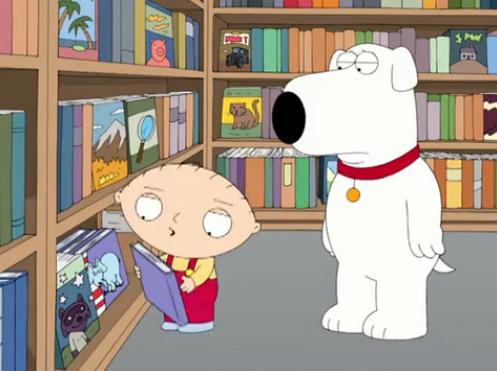Two Looney Tunes literary references (well, one literary and one drama)
(part of my ongoing Unexpected Literary References series)

It has been quite a number of years since I woke early to watch Saturday morning cartoons. People of my age (late 20s) will remember that Saturday morning was often reserved for a solid 3-4 hour block of cartoon watching. But since the introduction of all-cartoon networks like Cartoon Network and even Nick Jr. (as a stand-alone network, not as a day-time block on Nickelodeon), the idea that cartoons are something to be packaged and presented only once per week has become a bit of a foreign concept.
So, you can imagine my glee when I brought my son (2 1/2) into the living room this morning, turned on the TV, and found not only cartoons, but the very Looney Tunes cartoons I watched as a child (and as a hungover college student). Looney Tunes always had a reputation for mixing the literary with the cartoon. Back in the 50s and 60s (when the episodes I am most familiar with were originally made) books were still a key form of entertainment. Therefore, including literary references wouldn’t have been such a shocker. Which is why finding two references, back-to-back, wasn’t surprising this morning.
This first one actually comes from a play, not a book, but the writer, Tennessee Williams, is considered by many to be as much a literateur as any author. I am not familiar enough with A Streetcar Named Desire to know if this Looney Tunes’ episode plot of “A Street Cat Named Sylvester” actually reflects the plot of the play.

About “A Street Cat Named Sylvester“:
Tweety stumbles into Sylvester’s house looking for shelter and Sylvester hesistates if he saw a tweety bird in the same manner Tweety wonders if he saw a ‘Putty Cat’. Sylvester snatches him inside but has to hide Tweety in a vase covered by books, when Granny appears. While an injured Hector remains bedridden, Sylvester causes whatever diversion he can to stop Granny from spotting Tweety, making Granny give multiple doses of medicine to Hector. When Hector gets in Sylvester’s way from eating Tweety, Sylvester injures himself. Tweety spikes Hector’s medicine resulting in Sylvester ingesting the disgusting stuff.
The second reference of the morning comes from an episode called “Rabbitson Crusoe” which obviously comes from the title of the novel Robinson Crusoe. Like the previous reference, I don’t know enough about the original referent to know how much the Looney Tunes episode plot plays off of the literature plot. I can say that the Looney Tunes episode is pretty good (Bugs Bunny and Yosemite Sam; you can hardly do better)

About “Rabbitson Crusoe“:
Yosemite Sam narrates that a low tide and high rocks caused his shipwreck on a small island. After the ship’s remaining food stores have been used up, the only source of food is from a coconut tree on an adjacent island. Crossing between the islands, however, is always difficult because of a man-eating shark called Dopey Dick (another parody, this time based on Moby-Dick). Sam manages to get rid of the shark, who jumps after him on land, only by having a mallet ready on the tree with which to whack the shark back. On his way back to his island, he’s chased again by the shark, but this time has a baseball bat ready to whack the shark. Sam mutters that the shark has tried getting him for 20 years, but misses every time. As a result, one can infer that since the shipwreck, Sam has been marooned on the island for the amount of time described above.
Enter Bugs Bunny and the chase antics we all know and love.
Side-note, the new, updated version of Looney Tunes and Merrie Melodies called The Looney Tunes Show is actually pretty amazing. I recommend for anyone who grew up on the original.



So, do you think that Bugs Bunny’s penchant for cross dressing is more in line with the traditions of theater, or just plain funny?
A theatrical bunny is pretty funny, so I’d say either.